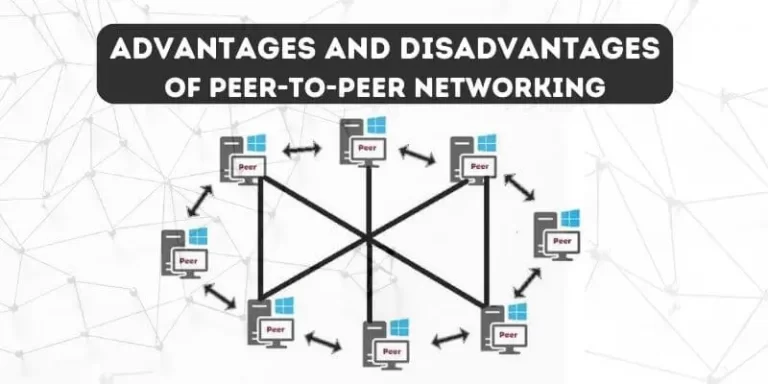Difference Between Intranet And Extranet

Intranet and extranet are both types of private networks, but they are used for different purposes. An intranet is a network that is used solely by an organization’s employees, while an extranet is a network that is used by a specific group of external users, such as partners or customers. Intranets are typically used for internal communication and collaboration, while extranets are used for sharing information and resources with external parties. In terms of accessibility, intranets are only accessible from within an organization, while extranets allow external parties to access specific parts of the network with permission. To Know about differences between Intranet and Extranet, stay with us till end.
What is Intranet?

An intranet is a private network that is used solely by an organization’s employees. It is typically built using the same technologies as the internet, such as web browsers and servers, but it is only accessible from within the organization. Intranets are used for a variety of purposes, including internal communication, file sharing, and collaboration.
Intranets can be a powerful tool for improving productivity and streamlining internal processes. They can be used to create a centralized location for important information and documents, such as company policies, procedures and employee handbooks.
Moreover, they can also be used to facilitate collaboration and communication among employees, regardless of their location or department. This can be done through features such as instant messaging, video conferencing, and forums. Additionally, intranets can also be used to create online forms, portals and other tools that automate internal processes, such as request for time off, or expense report submission.
Check LAN vs WAN Port: What’s the difference? How to Use and their Benefits.
Ten Amazing Uses of Intranet
Intranet has many amazing uses. Here are ten best of them:
Types of Intranet
Here are some types of intranet and their uses:

1- Corporate intranet
It is used for internal communication and collaboration within a company
2-Departmental intranet
It is used for specific departments or teams within an organization
3- Enterprise intranet
It connects multiple organizations or subsidiaries
4- Virtual Private Intranet (VPN)
It allows remote employees to access internal resources securely
5- Extranet-enabled intranet
It allows external parties to access specific parts of the network with permission.
6- Cloud-based intranet
It is hosted on a cloud computing platform and can be accessed from any device with internet connection.
What is Extranet?

On other hand, extranet is a private network that is used by a specific group of external users, such as partners, suppliers, or customers. It allows these external parties to access specific parts of the organization’s network with permission. Extranets are built using the same technologies as intranets and the internet, and they are typically used for sharing information and resources with external parties.
Extranets can be a powerful tool for improving relationships with external parties. They can be used to share information, such as product catalogs or pricing, with suppliers and partners, or to provide customers with access to account information and support resources. Extranets can also be used to collaborate with external parties, such as on joint projects or initiatives. Additionally, extranets can also be used for e-commerce, such as creating an online ordering system for customers, or for supply chain management, like tracking inventory levels and orders from suppliers. Extranets can also be used for remote access to internal resources for employees and partners, such as telecommuters, business partners or vendors.
Check Advantages And Disadvantages of Peer-To-Peer Networking.
Types of Extranet
Find out what are some common types of extranet and their amazing uses:
1- Business-to-business extranet
It is used for sharing information and resources with other businesses
2- Business-to-consumer extranet
It is used for sharing information and resources with customers
3- Supply Chain Extranet
It is used to connect the different participants of a supply chain
4- Virtual Private Extranet (VPN)
It allows remote employees, partners, or customers to access internal resources securely
5- Customer extranet
It allows customers to access specific parts of the network with permission, such as account management and support resources.
6- Partner extranet
It allows business partners to access specific parts of the network with permission, such as project collaboration, product development and other shared resources.
Ten Amazing Uses of Extranet
Find out 10 Amazing Uses of Extranet:
5 Main Differences Between Intranet and Extranet
Intranet and extranet both have different uses. Find out what are main 5 differences between them.

Purpose
The main difference between intranets and extranets is the purpose for which they are used. An intranet is a private network used solely by an organization’s employees, while an extranet is a private network used by a specific group of external users such as partners, suppliers, or customers.
Accessibility
Intranets are only accessible from within an organization, while extranets allow external parties to access specific parts of the network with permission. This means that extranet users require a login and password to access the network, while intranet users can access the network without the need for additional authentication.
Types of Users
Intranets are mainly used by employees of an organization, while extranets are used by external parties such as customers, partners, or suppliers.
Security
Intranets are generally considered more secure than extranets because they are only accessible by employees within the organization. Extranets, on the other hand, are accessible by external parties, which can increase the risk of security breaches.
Functionality
Intranets are used for internal communication and collaboration, while extranets are used for sharing information and resources with external parties. Intranets often include tools for things like employee directories, internal messaging, and document management, while extranets often include tools for things like customer account management, e-commerce, and supply chain management.
Conclusion
In summary, Intranet is a private network used internally by an organization, while extranet is a private network used by a specific group of external users such as partners, suppliers, or customers. Intranets are mainly used for internal communication and collaboration while extranets are mainly used for sharing information and resources with external parties. Intranets are more secured compared to extranets, as it is only accessible by employees within the organization.






